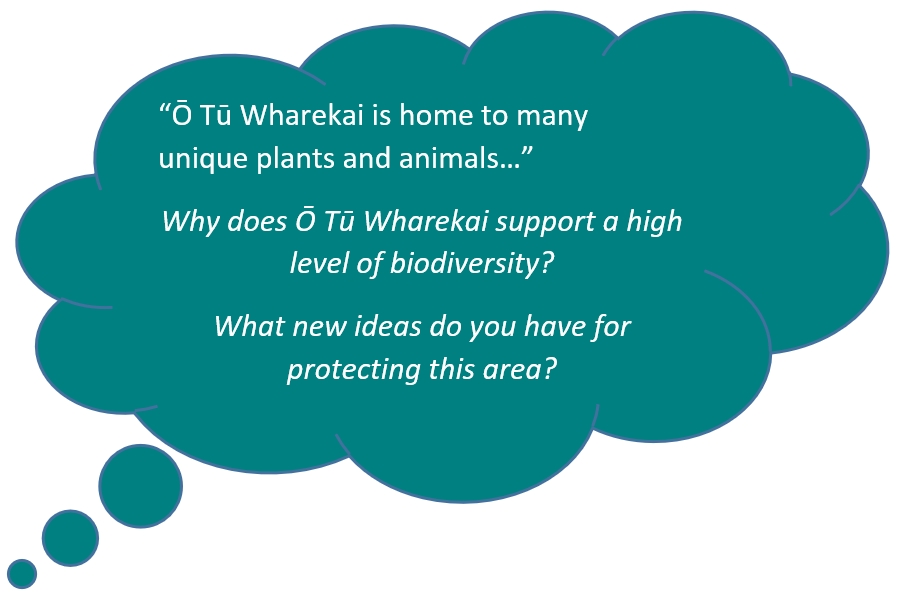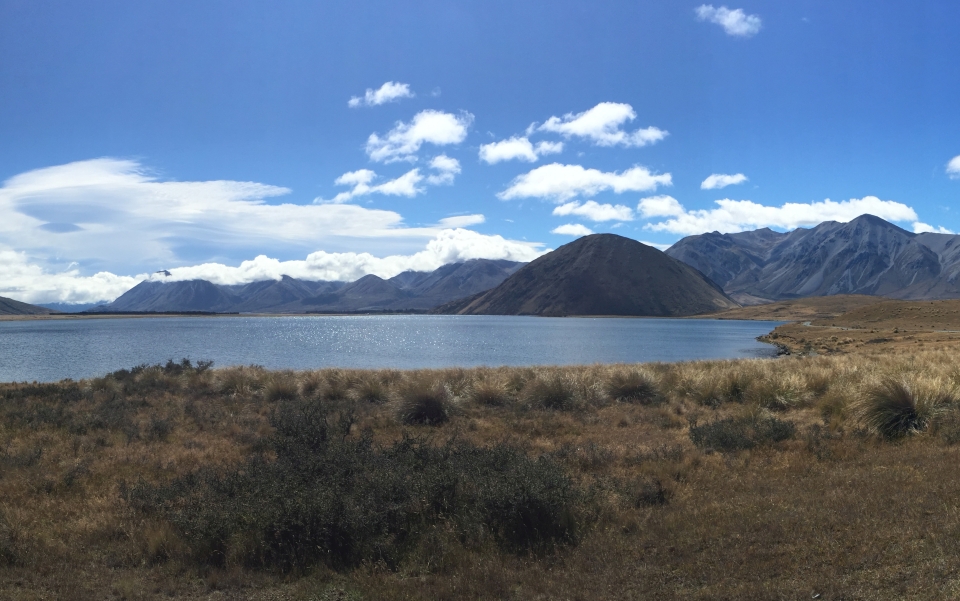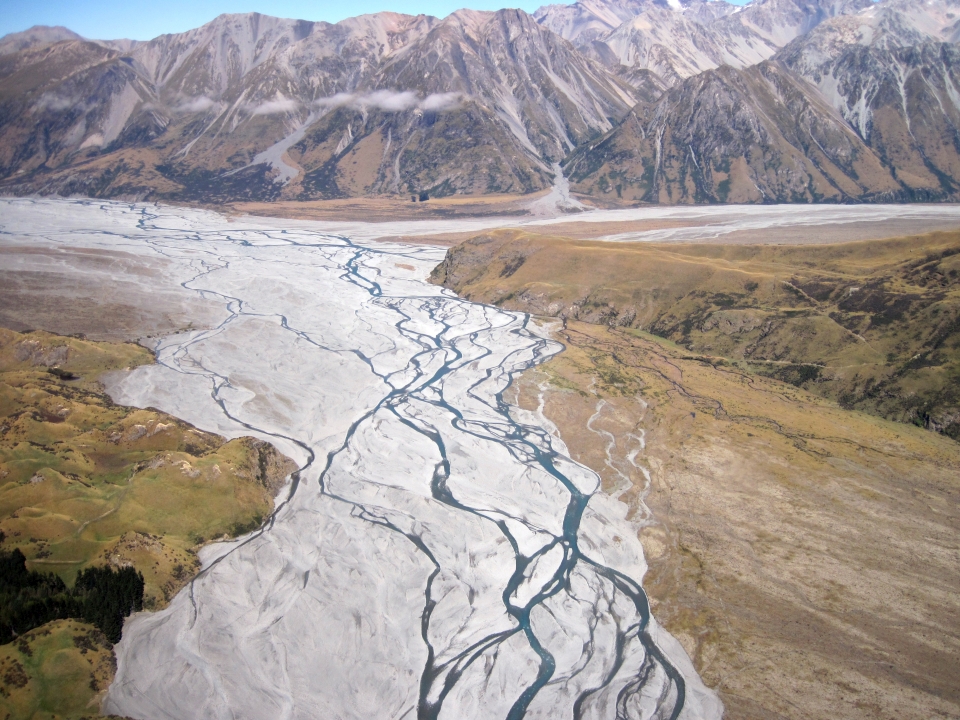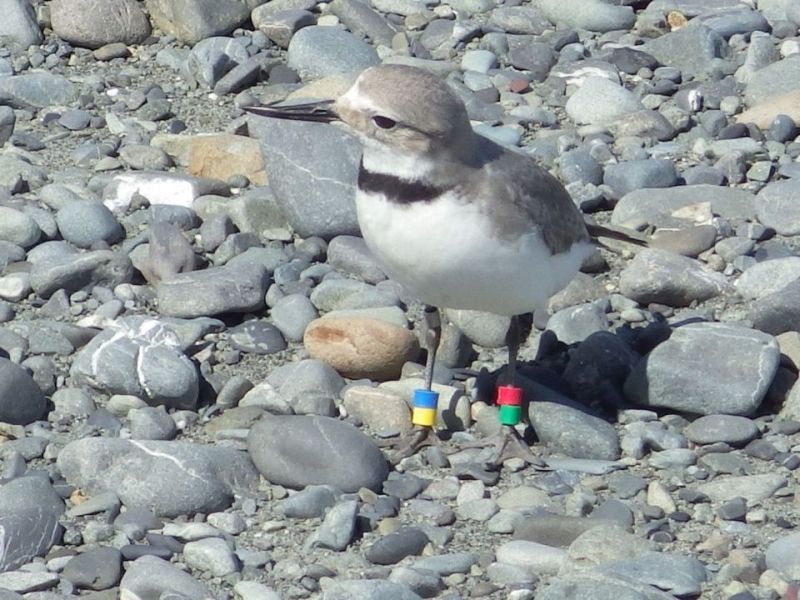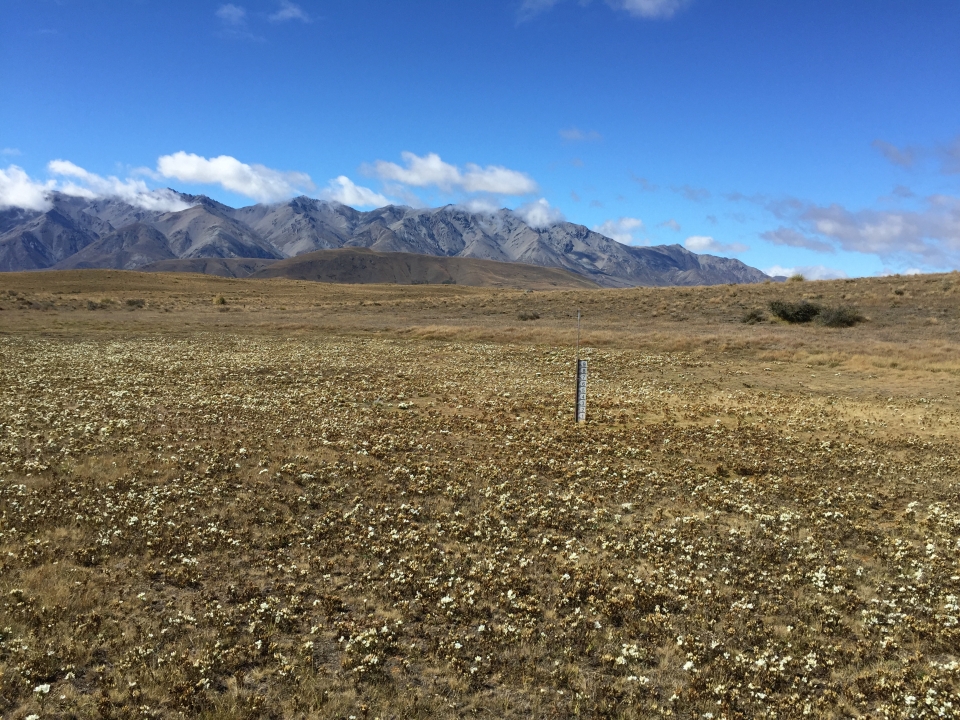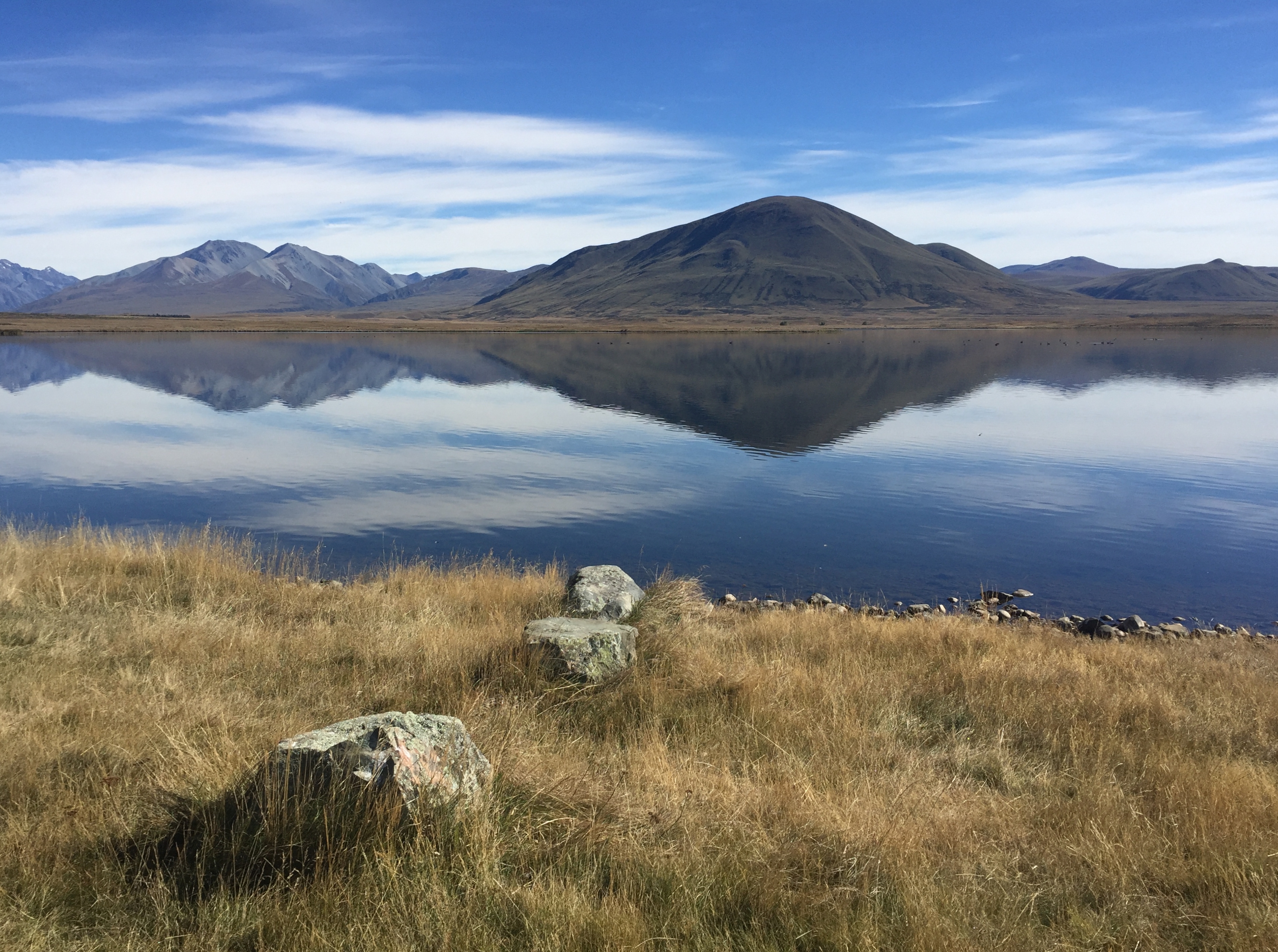Ō Tū Wharekai is nationally important for wildlife. It is one of the three sites that make up the national Arawai Kākāriki wetland restoration programme. This programme aims to:
- Protect wetlands.
- Increase our understanding of these productive environments.
The better our understanding of these environments, the more we can improve wetland restoration in New Zealand.
The Hakatere Conservation Park centred on Ō Tū Wharekai, was opened in October 2007. The habitats include:
- braided rivers
- high country lakes
- ephemeral tarns
- streams
- swamps
- bogs.
Ō Tū Wharekai has been shaped by glaciers and provides a variety of habitats. Because the landscape is so varied it can support a large diversity of wildlife.
Birds
There are over 30 bird species that regularly use the lakes and wetlands. Ō Tū Wharekai contains the upper Rangitata River, which includes one of the most important breeding sites for the threatened wrybill/ngutu pare.
Other birds such as the Australian bittern/mātuku, and the Australian crested grebe/kāmana can be found at Ō Tū Wharekai.
As well as birds and fish, Ō Tū Wharekai is also home to minute animals called zooplankton, that live in the water.
Plant life
Ō Tū Wharekai is an important site for kettle holes, which support rare ephemeral turf vegetation. The swamps of Ō Tū Wharekai include a threatened sedge. Plants aren’t just restricted to above water. Ō Tū Wharekai has a huge diversity of aquatic plants, including freshwater algae.
There are many threatened animals and plants living in Ō Tū Wharekai.
Threatened native fish:
- longfin eel/tuna
- upland longjaw galaxias (small, freshwater fish).
Threatened bird species:
- Australasian bittern/Mātuku
- black-fronted tern/Tarāpirohe
- black-billed gull/Tarāpuka
- wrybill/Ngutu pare
- banded dotterel/Turiwhatu
- Australasian crested grebe/Kāmana
- Caspian tern/Tārā nui.
Threatened Lizard species:
- White-bellied skink (Nationally critical)
- Mackenzie skink (Nationally vulnerable)
- Scree skink (Nationally vulnerable)
- Roamatimati/Long-toed skink
- Spotted skink (Declining)
- Canterbury Grass skink (Declining)
- Jewelled Gecko (Declining)
Threatened plant species:
- Craspedia heron
- marsh arrowrush
- pygmy forget-me-not
- pygmy clubrush
- native lily
- water brome
- rare grasses.
These wetlands also contain some of the best examples of red tussock and pūkio wetlands in Canterbury. You will need to look closely to find some of these plants and animals during your field trip to Ō Tū Wharekai.
Ready for a quiz? Try the "Biodiversity in Ō Tū Wharekai" interactive activity.
